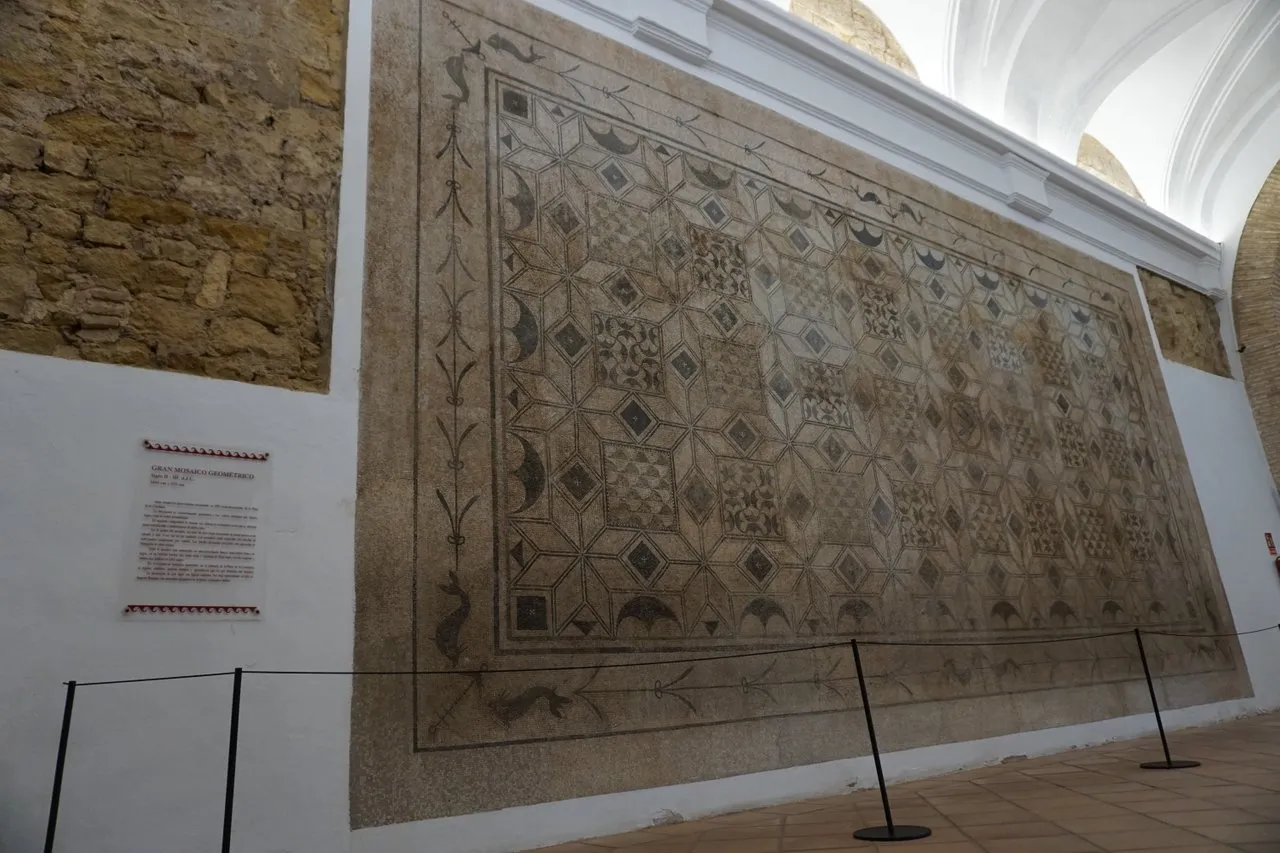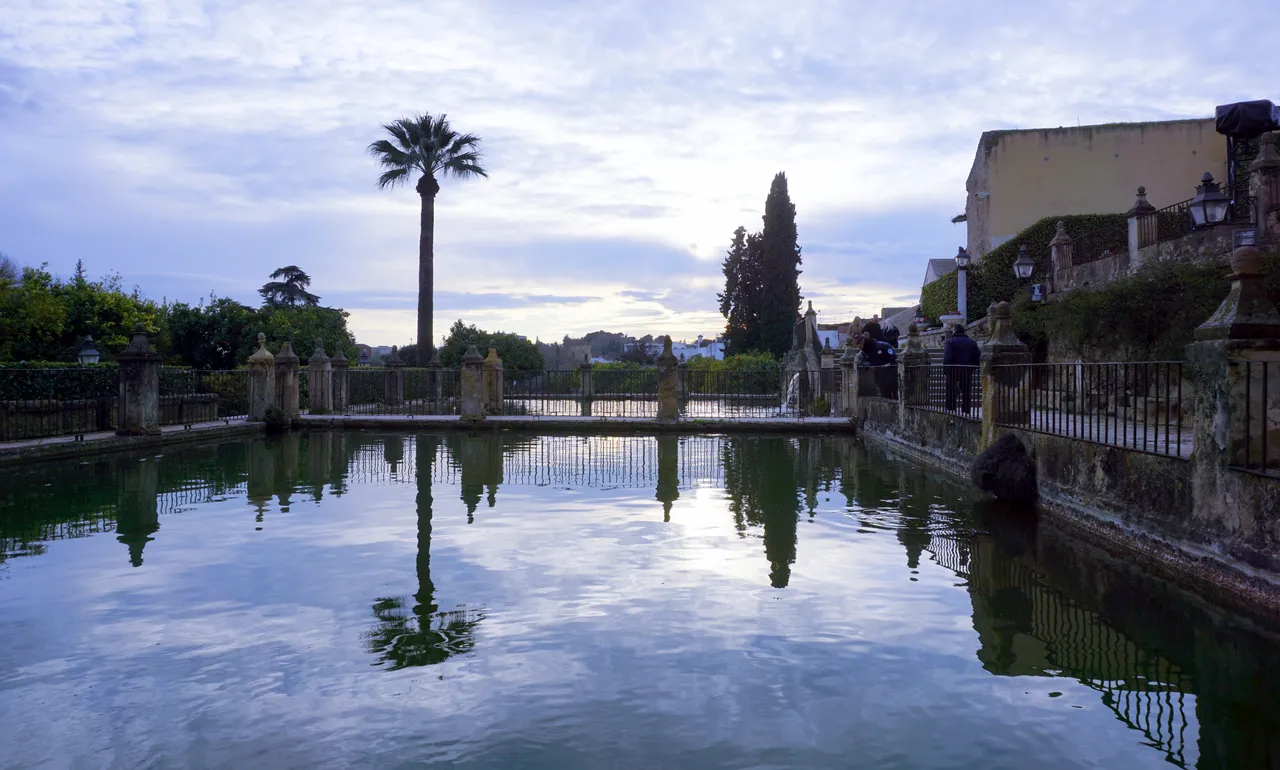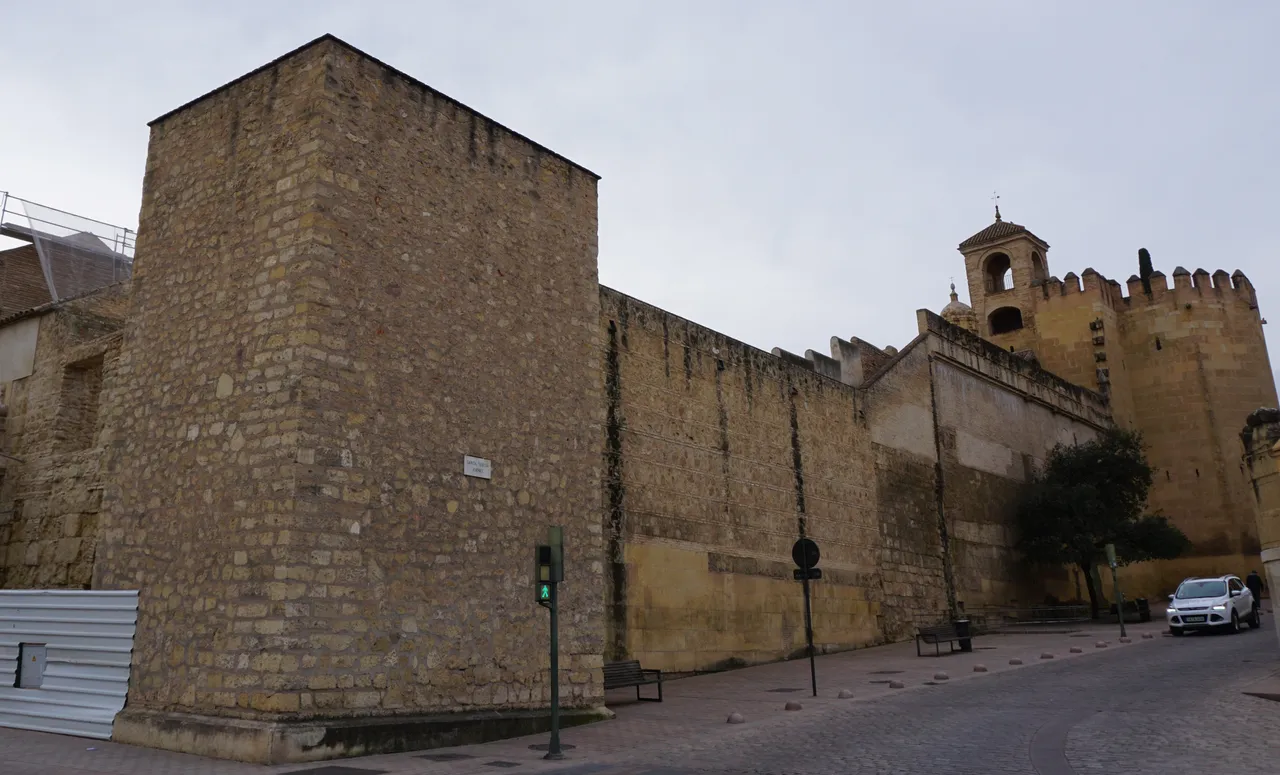
Hello folks,
I had been weeks without writing in this community and not because I have stopped traveling, but because the daily work and business trips have not left me much time to write in detail my travels as this community deserves.
On this occasion I want to introduce you to a place worth visiting in the city of Cordoba (Spain) which is located near the famous Mosque-Cathedral of Cordoba, which is the Alcazar of the Christian Kings.

To access this monument and discover the beauties that are inside it is necessary to previously get an entrance ticket that has a cost of 5 euros in a small ticket office that is in the corner of the park that is in front of the Alcazar.

You will know how to find the ticket office easily, because always next to it there are also horse-drawn carriages to tour the city, since in this ticket office they also sell passes to ride in horse-drawn carriages through the center of the city.

Entrance and Gallery
The visit to this place begins at the entrance by the tower of the Lions where you can see a large statue of King Alfonos X the Wise.


Turning left, one enters the building and after climbing a few steps one arrives at the place called the gallery. In the same one can see several busts among which is a bust of the Cordovan and Roman philosopher Seneca.

And a few meters from it I called my attention a sarcophagus of the third century, called sarcophagus of the Gates of Hades, in it are represented the gates of Hades, the family of the deceased, as well as the winged horse Pegasus on the sides.

Mudejar Courtyard
From this gallery, from one of the terraces, one can contemplate looking inward a beautiful courtyard called Mudejar courtyard. The courtyard has in its center a fountain and a pond. To access it there are several arcaded galleries and as you can see on one of its sides is the wall that connects the Tower of the Lions where he had entered the Tower of the Inquisition, which is another of the 4 towers that presents the fortress.

Hall of the Mosaics
Another must-see area of this marvelous Alcazar is the so-called Hall of Mosaics. In this place, which was originally the chapel of the Holy Inquisition in the 18th century, several of the mosaics from the Roman period that have been found in the city are currently on display.
The largest mosaic is found on the left wall of the hall and is a large mosaic from the 2nd-3rd century found in the Plaza de la corredera in Cordoba.

However, although smaller in size, but from the same period, the mosaics that I liked the most are the mosaic of Eros and Pisque and also the mosaic of Polyphemus and Galatea.


Women's Courtyard
The Women's Courtyard gets its name from the time when the Alcazar was used as a prison, since it was in this courtyard that the women's section was located. As you can see in this area there are several archaeological remains that were found during the excavations whose mission was the construction of a conference center after demolishing the walls of the women's prison. Among the archaeological remains that were found in this area are several mosaics and remains of a Roman wall of the first century stopped its construction.

Views from the Lions Tower
After leaving the mosaic room, I went back to almost the entrance of the fortification and climbed up some steep steps to the first of the area that serves as a viewpoint. From this place I could see the keep and what I still needed to climb to the top of the Tower of the Lions.


After catching my breath I continued my ascent. Look what steps there are to climb. I took the picture half way up looking down, isn't it vertigo-inducing?

Once I reached the top of the Torre de los Leones, I realized that the effort was worth it because from this place I could contemplate the beauty of this city.
At first I went to see the views of the city, where you can see the bell tower of the mosque-cathedral of Cordoba and the keep of the Alcazar.

In the opposite direction, the views overlook the interior of the Alcazar and specifically the Alcazar garden, where large ponds, fountains, gardens, trees and shrubs beautifully decorate this splendid place.

A stroll through the gardens
The end of my tour of the Alcazar of the Christian Kings was a walk through the gardens of the Alcazar, from where I could see the Tower of the Inquisition among several trees.

Walking through the garden I found several ponds where the surroundings of palm trees and other trees were reflected.

I also found a very nice decoration like this large artificial white flower that caught my attention.

As well as captured my attention these corridors of trees that led me to the sculptures of the Catholic Kings and Christopher Columbus.

Photography submitted to #Pobphotocontest by @friendlymoose
And I could not stop without contemplating the young flowers that were planted in the garden. It should be noted that the visit was in February and it was still winter, so I think that now in the month of May this place must be even more beautiful if possible.


To leave the complex, I went out through another of the gates that leads to the promenade near the Guadalquivir River with the intention of photographing the fourth tower which is the Torre de la Paloma.

And in turn I took the opportunity to photograph the mill of Albolafia, which is one of the largest and oldest water mills in Andalusia and was of vital importance to the city.

And I could not say goodbye without telling you to continue the visit to the city touring the Roman bridge and the tower of Calahorra. But that is material for a future post.

Best regards.

Own photograph taken with my Sony Alpha 6000L.
Cover, separators and banner created with www.canva.com (free version).
Translated with www.DeepL.com/Translator (free version).

